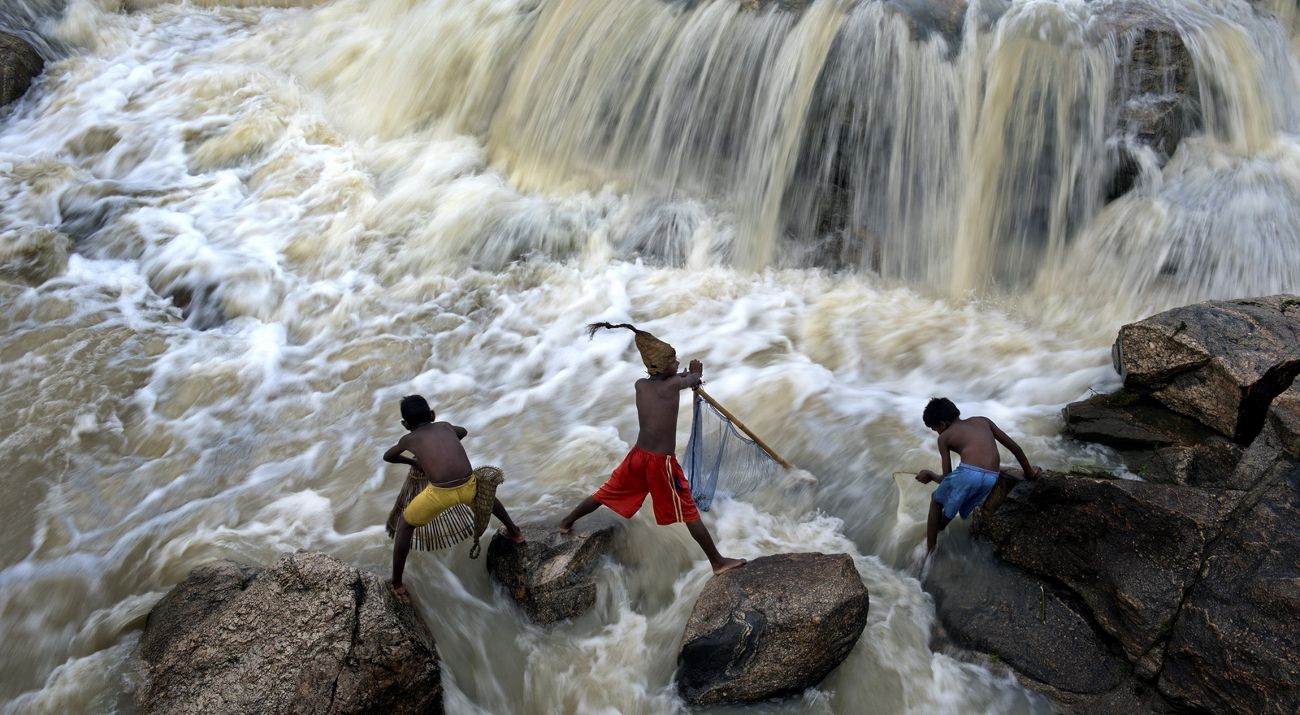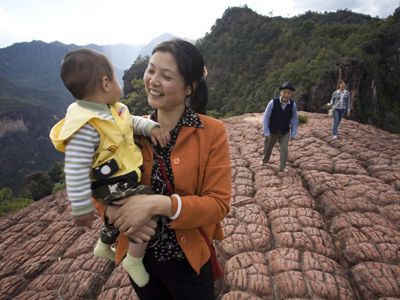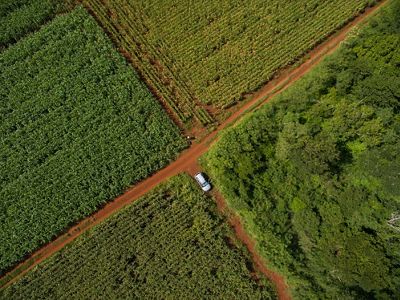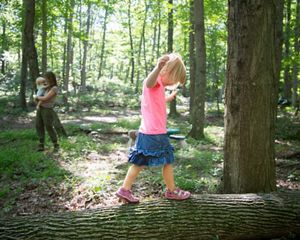
Conservation for the “Last Mile”
Even where the pandemic is not, communities need support today to sustain resources well into the future.
“In these unprecedented times...” We know, the phrase has become a cliché. But it's also true—these are unprecedented times, and we're all still working to fully understand what COVID-19 means for the world. As part of our effort to help make sense of these issues, we're publishing a new series of weekly perspectives from some of TNC's top scientists to share their expertise and talk about the relationship between nature and public health—and what nature can do for our communities in these, well, unprecedented times.
Previously in this series: “Greener Cities, Healthier Cities,” by Rob McDonald, TNC Scientist
From the eerily empty streets of New York City to the unusually calm canals of Venice, some of the most arresting imagery to have so far come out of the global COVID-19 pandemic has catalogued the near-overnight transformation of our planet’s most iconic cities into surreal scenes more redolent of a dystopian movie.
Likewise, an overwhelming majority of media coverage has so far focused on cities as hotspots for disease outbreaks and socioeconomic impacts. This shouldn’t surprise us. Cities are home to well over half the Earth’s human population, host the majority of major media outlets—and sadly, also provide ideal, high-density environments in which a novel pathogen like COVID-19 can flourish.
And yet many of the longer-term repercussions of this historic pandemic will be more acutely felt far from the maddening crowds of these major metropolises, in those rural regions of low- and middle-income countries where people are more reliant on the natural resources and ecosystems they live alongside.

Consider for example the 1.3 billion people globally who rely upon forests for their livelihoods. Or the approximately 50 million people employed as small-scale coastal or freshwater fishers. Not to mention all of those rural populations globally whose incomes are sustained to some extent by tourism. From the trails of the Himalaya to the plains of East Africa, collapsing international travel has impacted safari lodges, dive operators, trekking outfitters and the communities they support.
Sustainable stewardship of natural resources is often critical for rural populations’ long-term economic survival. Encouraging management of their natural riches in ways that reconcile the needs of both people and planet is a cornerstone of many conservation efforts in these parts of the world. But what happens to both community livelihoods and surrounding ecosystems when a major systemic shock like COVID-19 comes along?
Our global insights, straight to your inbox
Get our latest research, insights and solutions to today’s sustainability challenges.
Sign UpWhile disruption is nothing new to many of these communities—be it driven by drought, flooding, wildfires, or conflict—we need to acknowledge that COVID-19 is a different beast altogether. While the lower density of rural communities means people in these areas may not be as directly vulnerable to the virus in health terms as densely-packed city-dwellers, the sheer, all-encompassing scale of this crisis means they are likely to suffer disproportionate levels of indirect hardship as a result.
Witness for example how India’s lockdown drove an unprecedented exodus of dispossessed city-dwellers back to their families’ rural villages. Echoed at less dramatic scale across a range of other countries, this shift in population is placing huge strain on finite rural resources like cropland, fish and forest products, alongside the wildlife that shares these dwindling habitats. Meanwhile, even those lower-paid workers who choose to remain in the city are increasingly unable to share their earnings with rural relatives as jobs dry up and wages shrink, causing financial pressures at home.
As international travel collapses, so too rural tourism revenues dry up, and with them vital funding for protected area management, fisheries enforcement and anti-poaching efforts. With movement restrictions simultaneously limiting locals’ ability to plant or harvest crops, and healthcare costs spiraling in the face of a pandemic, often the only economic option left to those at the center of this vicious circle is to accelerate short-term exploitation of the very natural resources on which their communities’ long-term survival depends. And so we see in real time a powerful reminder of the often knife-edge balance between conservation and fundamental human survival that exists in so many of nature’s last remaining strongholds.
Quote
There's often a knife-edge balance between conservation and fundamental human survival that exists in nature's last remaining strongholds.
Evidence gleaned from The Nature Conservancy’s (TNC) years of field research around the globe attests that natural resource-reliant rural communities in low- and middle-income countries often have little choice but to overdraw from their own local ecosystems when other economic options evaporate. This is particularly the case for those “last-mile” populations living furthest from the urban hubs from which state aid and international relief funding tends to emanate.
What can we as an international conservation organization do to support both these rural communities and their surrounding ecosystems—sources of vital income but also precious reservoirs of biodiversity and climate mitigation—at a time of historic economic instability and accelerating planetary emergency? Our research shows it is possible to reconcile the needs of nature and society, and moral obligation compels us to act accordingly.

With a big shock such as COVID-19, which affects everybody at the same time, rural communities may not be able to be able to rely on family and friends to tide them over. This is where The TNC and other global non-profits have an important role. By ensuring that the poorest rural households have access to financial, health, and social support systems, we can both help those most in need while also minimizing unsustainable impacts on nature.
How do we do this? We partner with development organizations and other local bodies that are able to deliver local support; use our networks and communications reach to help last-mile communities access health supplies and aid; provide technological infrastructure that enables local support services to engage and share their on-the-ground learnings with international aid agencies; and compile information that allows local communities to continue small-scale economic activities like fish markets or sustainable logging within the legal parameters required by movement restrictions, social distancing measures and heightened hygiene requirements.
Central to this work is keeping the realities of these communities’ daily lives in mind. Even in good times, stressing the need for more rigorous enforcement of protected areas, forests and fishing grounds can easily cause friction with those struggling to make a living in rural areas. In times of widespread economic hardship, it only gets tougher.
The coming years are likely to present even more challenges, and how we respond will be a true barometer of the integrity of the conservation movement. We can only reach a sustainable recovery if we use our scientific expertise, our local presence and global reach to make a tangible difference for all living things—people and nature—that share these special places.
Global Insights
Check out our latest thinking and real-world solutions to some of the most complex challenges facing people and the planet today.



